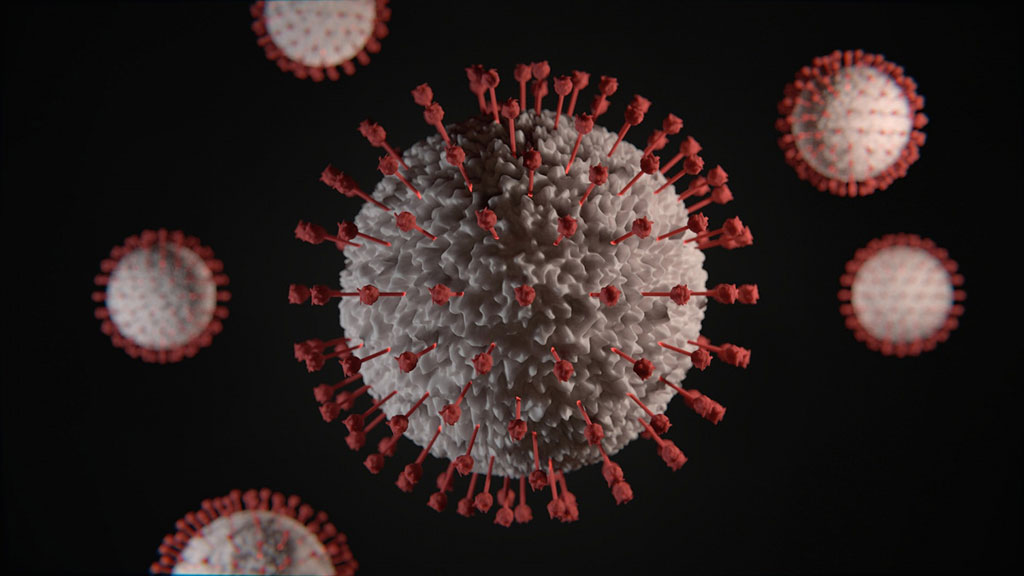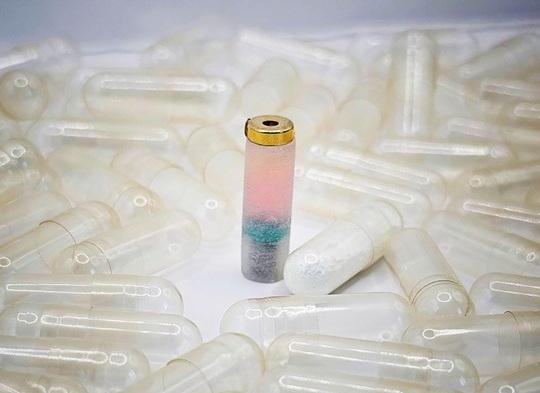Urinary Proteome Analysis Predicts Transition from Moderate to Severe Disease in COVID-19 Progression
|
By HospiMedica International staff writers Posted on 21 Mar 2022 |

Since the pandemic broke out, a team of researchers working in the forefront line of compacting COVID-19 disease have been investigating whether they could find clues for what happened to the living COVID-19 patients at the molecular level. As urine can be readily obtained from living people, they looked at all kinds of proteins in the urine. Their latest findings suggest that urine may provide a window for us to see what is happening inside the human body and predict the transition from moderate to severe disease in COVID-19 progression.
By applying LC/MS-MS-based proteomics, scientists at the National Center for Protein Sciences (Beijing, China) analyzed 317 urine proteomes from 86 COVID-19 and 55 pneumonia patients and 176 healthy controls, they identified 4,255 proteins from the urine, in which proteins with functions of immune and metabolism were among the most significantly altered after SARS-CoV-2 infection. It was exciting and reassuring to find proteins in the anti-virus response pathway from the urinary proteome, including the up-regulated dsRNA detector DDX58/RIG-I, the virus response specific transcription factor STAT1, and a collection of ISG proteins.
Trawling through the data, the scientists came across an under-studied protein, CLYBL, which was not included in the commonly used database for annotation in bioinformatics. CLYBL, a citramalyl-CoA lyase, catalyzes the transition of itaconate to acetyl-CoA in the TCA cycle. Thus, increased CLYBL indeed led to the consumption of anti-inflammatory metabolite itaconate in COVID-19 patients. As Itaconate was shown to play an important role in antioxidation, cellular protection, and anti-inflammation, these observations led to the speculation that supplement of itaconate along or with inhibition of CLYBL might be possible therapeutic options for treating COVID-19 patients.
By comparing the proteomes of the early-disease-stage patients who later turned into severity with those of the patients who remained moderate across disease progression, the team identified a number of proteins, which may predict the transition from moderate to severe disease in COVID-19 progression. Increased levels of CD14, RBP4, SPON2, GMFG, SERPINA1, SERPINB6 and SERPINC1 in severe COVID-19 patients and their known biological functions suggested that macrophage-induced inflammation and thrombolysis may play a critical role in worsening the disease.
The current study showed that the urine proteome contained clues to what is happening inside the human body. It is a convenient source of biological samples that can be obtained from living people under physiological and pathological conditions. Peeking through the urine proteome, one can find signaling pathways as well as potential drug targets. In this specific COVID-19 case, the finding that the endogenous immune-modulating metabolite itaconate as a potential therapy option for treating the disease is particular timely, as an immune modulating therapy is independent of mutating virus, say it is Delta or Omicron.
Related Links:
National Center for Protein Sciences
Latest COVID-19 News
- Low-Cost System Detects SARS-CoV-2 Virus in Hospital Air Using High-Tech Bubbles
- World's First Inhalable COVID-19 Vaccine Approved in China
- COVID-19 Vaccine Patch Fights SARS-CoV-2 Variants Better than Needles
- Blood Viscosity Testing Can Predict Risk of Death in Hospitalized COVID-19 Patients
- ‘Covid Computer’ Uses AI to Detect COVID-19 from Chest CT Scans
- MRI Lung-Imaging Technique Shows Cause of Long-COVID Symptoms
- Chest CT Scans of COVID-19 Patients Could Help Distinguish Between SARS-CoV-2 Variants
- Specialized MRI Detects Lung Abnormalities in Non-Hospitalized Long COVID Patients
- AI Algorithm Identifies Hospitalized Patients at Highest Risk of Dying From COVID-19
- Sweat Sensor Detects Key Biomarkers That Provide Early Warning of COVID-19 and Flu
- Study Assesses Impact of COVID-19 on Ventilation/Perfusion Scintigraphy
- CT Imaging Study Finds Vaccination Reduces Risk of COVID-19 Associated Pulmonary Embolism
- Third Day in Hospital a ‘Tipping Point’ in Severity of COVID-19 Pneumonia
- Longer Interval Between COVID-19 Vaccines Generates Up to Nine Times as Many Antibodies
- AI Model for Monitoring COVID-19 Predicts Mortality Within First 30 Days of Admission
- AI Predicts COVID Prognosis at Near-Expert Level Based Off CT Scans
Channels
Critical Care
view channel
AI Heart Attack Risk Assessment Tool Outperforms Existing Methods
For decades, doctors have relied on standardized scoring systems to assess patients with the most common type of heart attack—non-ST-elevation acute coronary syndrome (NSTE-ACS). The GRACE score, used... Read more
'Universal' Kidney to Match Any Blood Type
Blood-type incompatibility has long been one of the greatest obstacles in organ transplantation, forcing thousands of patients—particularly those with type O blood—to wait years longer for compatible donors.... Read moreSurgical Techniques
view channel
Minimally Invasive Endoscopic Surgery Improves Severe Stroke Outcomes
Intracerebral hemorrhage, a type of stroke caused by bleeding deep within the brain, remains one of the most challenging neurological emergencies to treat. Accounting for about 15% of all strokes, it carries... Read more
Novel Glue Prevents Complications After Breast Cancer Surgery
Seroma and prolonged lymphorrhea are among the most common complications following axillary lymphadenectomy in breast cancer patients. These postoperative issues can delay recovery and postpone the start... Read morePatient Care
view channel
Revolutionary Automatic IV-Line Flushing Device to Enhance Infusion Care
More than 80% of in-hospital patients receive intravenous (IV) therapy. Every dose of IV medicine delivered in a small volume (<250 mL) infusion bag should be followed by subsequent flushing to ensure... Read more
VR Training Tool Combats Contamination of Portable Medical Equipment
Healthcare-associated infections (HAIs) impact one in every 31 patients, cause nearly 100,000 deaths each year, and cost USD 28.4 billion in direct medical expenses. Notably, up to 75% of these infections... Read more
Portable Biosensor Platform to Reduce Hospital-Acquired Infections
Approximately 4 million patients in the European Union acquire healthcare-associated infections (HAIs) or nosocomial infections each year, with around 37,000 deaths directly resulting from these infections,... Read moreFirst-Of-Its-Kind Portable Germicidal Light Technology Disinfects High-Touch Clinical Surfaces in Seconds
Reducing healthcare-acquired infections (HAIs) remains a pressing issue within global healthcare systems. In the United States alone, 1.7 million patients contract HAIs annually, leading to approximately... Read moreHealth IT
view channel
Printable Molecule-Selective Nanoparticles Enable Mass Production of Wearable Biosensors
The future of medicine is likely to focus on the personalization of healthcare—understanding exactly what an individual requires and delivering the appropriate combination of nutrients, metabolites, and... Read moreBusiness
view channel
Philips and Masimo Partner to Advance Patient Monitoring Measurement Technologies
Royal Philips (Amsterdam, Netherlands) and Masimo (Irvine, California, USA) have renewed their multi-year strategic collaboration, combining Philips’ expertise in patient monitoring with Masimo’s noninvasive... Read more
B. Braun Acquires Digital Microsurgery Company True Digital Surgery
The high-end microsurgery market in neurosurgery, spine, and ENT is undergoing a significant transformation. Traditional analog microscopes are giving way to digital exoscopes, which provide improved visualization,... Read more
CMEF 2025 to Promote Holistic and High-Quality Development of Medical and Health Industry
The 92nd China International Medical Equipment Fair (CMEF 2025) Autumn Exhibition is scheduled to be held from September 26 to 29 at the China Import and Export Fair Complex (Canton Fair Complex) in Guangzhou.... Read more

















